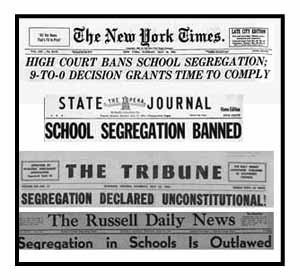[[
Is North Idaho College President Priscilla Bell trying to resurrect the “separate but equal” doctrine handed down in the 1896 US Supreme Court case of Plessy v. Ferguson? From my perspective, it sure looks like it.
The Plessy v. Ferguson decision upheld the Louisiana law mandating racial segregation on intrastate railroad cars as long as the accommodations were separate but equal.
One hundred thirteen years after Plessy, Priscilla Bell wants to establish “separate but equal” campuses to socially segregate “typical college students” from, well, those who choose to learn the skills of the trades and industry.
Does that sound like an unfair and even harsh description of her aspirations? Take time to read her online column posted December 21, 2009, in the Coeur d’Alene Press. Please pay particular attention to these two paragraphs written by Priscilla Bell:
We need this dual approach because of the different nature of our programs and the needs of our students. Our general studies programs require a traditional campus environment as do many professional-technical programs such as health professions and business professional programs. These students use the library; they live in the residence halls; they are active in student activities; they eat in the student union building. They represent what is portrayed as a typical college student on a typical college campus.
Professional-technical programs on the other hand, particularly in trades and industry fields, require little beyond their classrooms, shops and work areas. These programs are, for the most part, self-sufficient. They have their own libraries of technical manuals and students tend to come to campus only for their specific classes. Programs such as welding, diesel technology and auto repair can be held anywhere the proper equipment can be set up. In fact, we are currently renting space off campus for some of these programs.
Bell is an arrogant, ignorant bigot. She assumes that neither the “typical college student” nor the vocational students would benefit from interaction with each other. Or maybe she fears that her “typical college student” might somehow become contaminated by exposure to those seeking satisfying careers in the trades. Wouldn’t it be awful, she might reason, if a student who wants to be a nurse or a teacher or a musician might befriend someone who wants to (gasp!) be a carpenter, a welder, or an automotive technician. Both students might find they have more in common than in difference! You wouldn’t want that, would you Priscilla?
Bell cannot bring herself to believe that a skilled tradesman who can repair a diesel engine and help keep the interstate commerce flowing smoothly might also be interested in English literature, art, or the physical or social sciences. Neither would she be willing to accept that someone who could compose music might also benefit from knowing how to put up drywall or fix a broken pipe or replace a defective light switch.
A community college is a golden opportunity for social integration as well as for people of all educational and skill levels to improve themselves. Equally important, through the interaction of students of all ages, cultures, interests, and aptitudes, the community college helps all who work, attend, and visit there develop respect for the work done by those with whom they interact.
It would not be until 1954 that the “separate but equal” doctrine established in Plessy would be overturned in Brown v. Board of Education of Topeka. Evidently Priscilla Bell and the North Idaho College Board of Trustees didn’t get the memo.


Hey Bill! I’m not an arrogant, ignorant, bigot and I don’t have a problem with President Bell’s comments. I have long been advocated separate curriculum tracks in high schools for university bound students and non university bound students. I think the same separation probably makes for more efficient program delivery at the junior (I love that word) college level This thinking has usually been met by educators with the same derision you are spouting. So far I think it is refreshing that President Bell feels the same way. I do wonder though, what are her ulterior motives. I liked Mary’s piece about the college wanting to require technical students to register differently so the college can claim more money.
Comment by CdACanuck — January 17, 2010 @ 1:51 pm
CdACanuck,
Thanks for commenting. Your thinking was similar to that used to justify and rationalize other forms of arbitrary discrimination. The language used in Plessy is eerily similar to Bell’s:
Bell’s ulterior motives are the same as the City’s: Concentrate the “typical college students” at the downtown campus where they are more likely to spend their spare time and money in downtown Coeur d’Alene. Vocational students who work during the day and study at night are less likely to be big spenders downtown, so let’s just shuffle them off to the prairie, right? Call that “more efficient program delivery” if it makes you feel better, but I call it arbitrary economic and social discrimination against both the “typical college students” and the vocational students.
It would be interesting to find out which group, the “typical college students” or the vocational students, tends to remain a stable social and economic force in the community over a period of years. I wonder if the “typical college students” remain here after they graduate, or do they go elsewhere? If the vocational students tend to be area people who are already employed and are going to NIC to enhance their job skills, that means they and their employers are already contributing economically to the community. Of course, in the short term the downtown bars and restaurants would rather have the “typical college students,” but over the long haul, I suspect the resident returning to NIC to enhance job skills and retainability contributes more to the community.
Comment by Bill — January 17, 2010 @ 2:34 pm